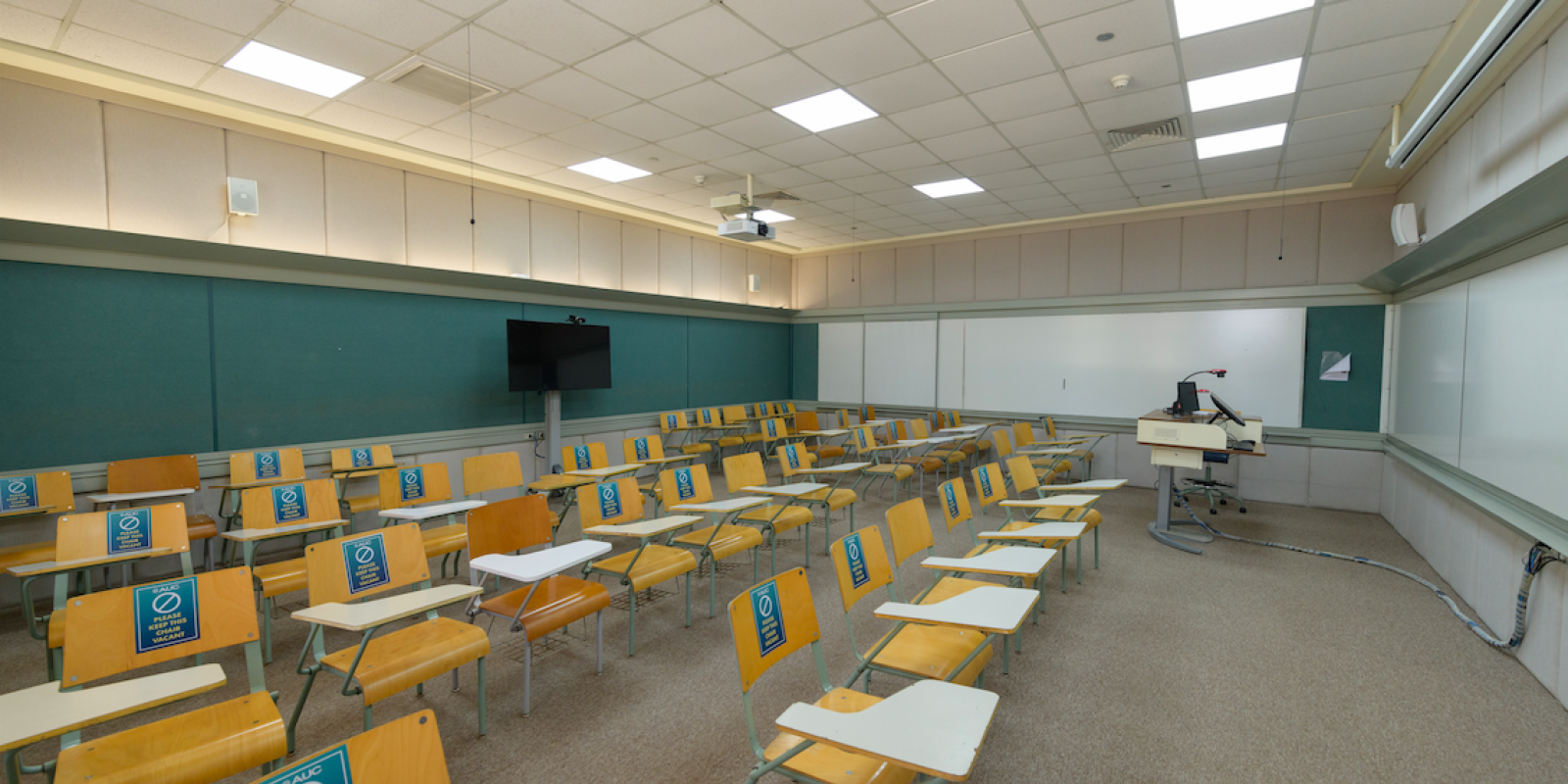
Reconfiguring Classrooms
Since the outbreak of the COVID-19 pandemic, a task force led by Ahmed Tolba ’97, ’01, associate professor of marketing and chair of the Department of Management, has worked to facilitate the best and safest mode of study for the past four semesters. So far, there has been a mix of full online and partial face-to-face instruction. However, with the decision to return to full face-to-face instruction in the fall, the task force had three weeks to plan how all classes will return to campus while keeping social distancing measures intact by September.
“We were trying to come up with a solution that would help schedule all these classes [back on campus],” Tolba said. “Of course, we were aware of the fact that we are not fully vaccinated yet, the virus is still there and there are people who are very worried. So we recommended that we go for a 1.5-meter social distance with masks so that we can keep the precautionary measures on campus.”
Over the course of three weeks, the task force planned for what should usually have taken months: allot classrooms and times for every course and section on campus while making sure students in these classes are sitting 1.5 meters apart and class times are widely spaced out. This meant making use of large classrooms, labs and studios, which are small in number compared to smaller and medium-sized classes.
“This was very tough because the large rooms were just eight out of 140 classrooms, while close to half of our classes require a capacity of 25 plus. So we were trying to fit about 50% of the classes in just 5% of the classrooms, which was crazy,” Tolba said.
This task was challenging, so Tolba and his team needed to restructure in order to make it work. They did this with time slots, hybrid modes for certain classes and cutting down course enrollment sizes.
The slots refer to the day and times a classroom is available. The taskforce filled slots to maximum capacity and then needed to add more on Tuesdays and Saturdays. About 80 courses will now meet on Tuesdays and Saturdays.
Secondly, the task force decided to make some larger classes dual delivery, meaning half the class is in person and the other half is participating over Zoom. The halves will switch out during the week. A total of 74 classes were transformed into dual delivery.
Lastly, the task force worked closely with departments to see if classroom enrollment numbers were reaching their maximum. If they weren’t, then they can move courses into smaller classroom sizes and use those extra spots to create more slots.
“So let's say for example, we have 10 sections of 30 students, and I can drop all of them to 24. That leaves six places per section –– so a total of 60. We can then add two or three more sections, and hire adjunct faculty to teach them,” Tolba said.
After a few weeks of hard work, the task force was able to make it so that 100% of the sections are accommodated for. “It was a lot of work, but the registrar office’s team did an incredible job,” Tolba said.
As for actually maintaining social distancing and keeping masks on, that is a task left to the AUC community and individual responsibility on campus.
“The management and operations led by VP Shereen Shaker and the team are doing a fantastic job in trying to implement safety measures on the ground and avail all the precautionary measures. All members of the AUC community will be in a safe situation. It’s up to us to act responsibly and in accordance with campus guidelines.”
